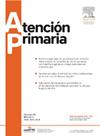家庭功能与慢性疾病:预防照料者在依赖前超负荷
IF 1.6
4区 医学
Q2 MEDICINE, GENERAL & INTERNAL
引用次数: 0
摘要
目的描述至少有一名成员患有慢性疾病的家庭对家庭功能和脆弱性的看法,确定在面对潜在的未来依赖时可能代表风险因素的关键维度。设计定量、横断面和描述性研究。智利科金博地区的教育机构。样本由385个人组成(184名高中生和201名家长或法定监护人),通过分层概率抽样选择。干预措施:未进行干预。在初级保健中应用了两种有效的工具:家庭APGAR和SALUFAM量表,以及社会人口调查问卷。主要结果评估:感知家庭功能(APGAR)和生物心理社会脆弱性(SALUFAM)。使用非参数检验分析与社会人口变量的关系。内部一致性采用Cronbach’s alpha评价。结果参与者报告了高感知的家庭功能和低脆弱性。根据社会经济水平或学校类型,没有发现统计学上的显著差异。然而,根据角色(成人与青少年)和户主性别,在功能感知方面观察到显著差异,特别是在沟通、决策和家庭应对等领域。两种仪器均显示出足够的内部一致性(α = 0.65和。78年,分别)。结论:尽管家庭功能的整体认知是良好的,但在涉及未来依赖的情况下,确定了可能构成风险的特定脆弱性领域。初级保健机构的早期评估可支持及时的健康促进战略,有助于预防照顾者负担并加强家庭复原力。本文章由计算机程序翻译,如有差异,请以英文原文为准。
Funcionalidad familiar y enfermedades crónicas: una mirada preventiva a la sobrecarga del cuidador antes de la dependencia
Objective
To describe the perception of family functionality and vulnerability in households where at least one member has a chronic illness, identifying critical dimensions that may represent risk factors in the face of potential future dependency.
Design
Quantitative, cross-sectional, and descriptive study.
Setting
Educational institutions in the Coquimbo region, Chile.
Participants
The sample consisted of 385 individuals (184 high school students and 201 parents or legal guardians), selected through stratified probabilistic sampling.
Interventions
No interventions were conducted. Two validated instruments in primary care were applied: the Family APGAR and SALUFAM scales, along with a sociodemographic questionnaire.
Main outcome measures
Perceived family functionality (APGAR) and biopsychosocial vulnerability (SALUFAM) were assessed. Associations with sociodemographic variables were analyzed using non-parametric tests. Internal consistency was evaluated using Cronbach's alpha.
Results
Participants reported high perceived family functionality and low vulnerability. No statistically significant differences were found based on socioeconomic level or type of school. However, significant differences were observed in functionality perception by role (adults vs. adolescents) and by gender of the head of household, particularly in areas such as communication, decision-making, and family coping. Both instruments showed adequate internal consistency (α = .65 and .78, respectively).
Conclusions
Although the overall perception of family functioning was favorable, specific areas of fragility were identified that may pose risks in scenarios involving future dependency. Early assessment in primary care settings may support timely health promotion strategies, helping to prevent caregiver burden and strengthen family resilience.
求助全文
通过发布文献求助,成功后即可免费获取论文全文。
去求助
来源期刊

Atencion Primaria
医学-医学:内科
CiteScore
2.90
自引率
8.00%
发文量
156
审稿时长
33 days
期刊介绍:
Atención Primaria es una revista que publica trabajos de investigación relativos al ámbito de la atención primaria de salud. Desde el punto de vista conceptual, Atención Primaria asume el nuevo modelo de atención primaria de salud, orientado no sólo a la curación de la enfermedad, sino también a su prevención y a la promoción de la salud, tanto en el plano individual como en el de la familia y la comunidad. En estos nuevos aspectos que definen el modelo de atención primaria de salud es en los que se centran los trabajos de investigación que publica Atención Primaria, la primera revista de originales española creada para recoger y difundir la producción científica realizada desde los centros de atención primaria de salud sobre cuestiones como protocolización de la asistencia, programas de prevención, seguimiento y control de pacientes crónicos, organización y gestión de la asistencia primaria, entre otros.
 求助内容:
求助内容: 应助结果提醒方式:
应助结果提醒方式:


